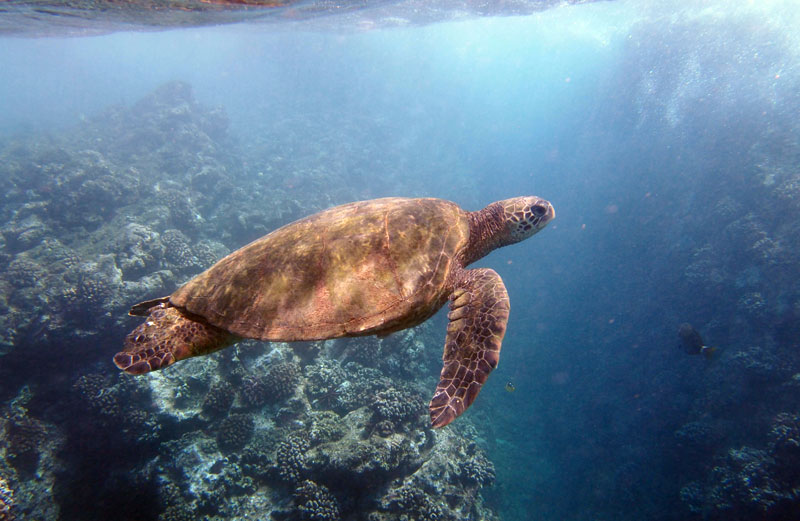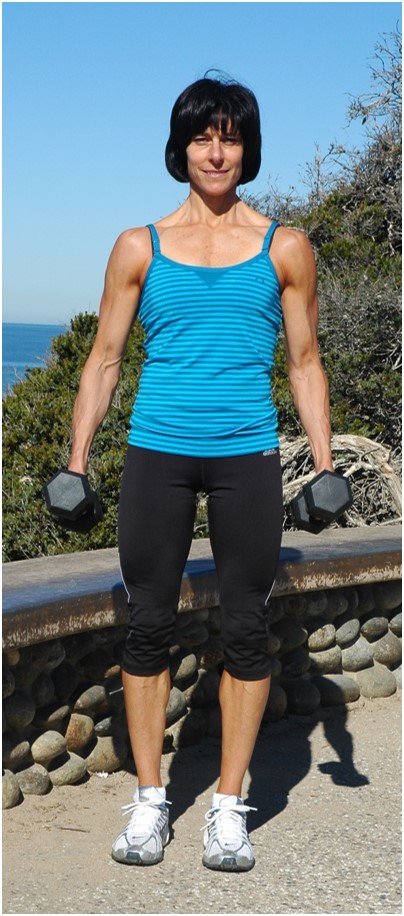Most divers don’t think “blue water diving” when visiting this tropical vacation destination, but the Hawaiian Islands are located near the middle of the Pacific Ocean more than 2,400 miles from the United States and more than 4,000 miles from Asia. Channels around the nine most commonly known Hawaiian Islands range in depth from 200 to more than 10,000 feet deep. The sheer size of the land masses can give divers a false sense of security. Conditions around the islands change quickly. Shore diving is prevalent with rugged volcanic terrain or steep deep sand and pounding surf. Many of the best dive sites require larger faster dive boats, live boat drops, drift diving and trips of an hour or more each way. Diving begins early each day before the winds increase. Even on relatively calm days, the seas present waves and currents not necessarily experienced elsewhere. While diving may be moderate and is available for all levels of certification, dive operators designate certain dive sites for advanced divers only.
by Gretchen M. Ashton, CFT, SFT, SFN, NBFE
Diving in the Hawaiian Islands can be challenging at times, but mostly it is exhilarating. Once below the surface divers can enjoy visibility ranging from 50 to 100 feet with occasional 200-foot views. Water temperatures are usually between 70 and 80 degrees and a three millimeter wetsuit or more is recommended. Of course, the best thing about diving around the Hawaiian Islands is the wide variety of marine life. Divers may see whales and dolphins, manta and eagle rays, hammerhead, tiger and reef sharks, octopus, sea turtles, nudibranchs, and many varieties of sport and colorful reef fish.
Divers are best prepared for diving in the Hawaiian Islands with a better than average level of fitness. Specifically training a combination of strength and endurance for three-months is a good foundation. One of the fastest ways to increase overall body strength is to develop the large muscles of the back.
The biceps muscles are used for pulling and help divers train the back for these particular conditions and logistics. Build strength and endurance by performing the Bent Over Row for one-minute and immediately performing the Biceps Hammer Curl for one-minute. Continue alternating three times without resting. If muscle fatigue limits the lifting, drop set by lowering the weight and continuing the repetitions. Selecting the correct weight is important. When the weight selection is ideal, the last two-minutes should feel challenging but successfully completed. Once divers can perform the six-minute sequence without muscle failure, increasing the weight gradually increases strength and endurance.
Bent Over Row – Reverse Grip
Along with developing strength, this exercise helps maintain good posture, and develops torso stability involving muscles of the back and lower body similar to diving activity. Stand with feet between hip and shoulder width, bend forward at the hip, contract the abdominals and the buttocks to protect the low back, tuck shoulder blades down and toward center
(retract), keep head in line with the spine, reverse the grip (palms up), straighten wrists, bend knees slightly, and extend arms. Inhale before beginning the movement and exhale while pulling the elbows back along the sides of the torso. Inhale again while resisting and lowering the weights. Notice the flat back. Concentrate on pulling with the biceps and large muscles of the back. Some divers will enjoy performing this exercise with a T-Bar Row apparatus.
PRECAUTIONS: Divers with low-back complications should not perform this exercise in a standing position. Instead, try a seated position with a small rolled towel or pillow placed under the abdomen for lower-back support. You can also do a One-Arm Dumbbell Row, either kneeling or seated.
Biceps Hammer Curl – Standing
Standing with feet about hip width apart slightly flex the knees, contract the abdominals and buttocks, and tuck the shoulder blades down and toward center. The dumbbells are held in a hammer position in this demonstration. There is no need to twist the dumbbells at any time during this exercise, but do look to make sure the elbow remains alongside the torso throughout the curl. For most divers, the range of motion will be complete before the dumbbell gets to the shoulder. If the elbow is pulling forward, this means the movement has gone too far, the biceps are beyond contraction and the final movement came from the shoulder. Inhale before starting the exercise and exhale while lifting the weights.
PRECAUTIONS: Do not lean backwards during the lift, to prevent strain in the low back. If the dumbbells won’t come all the way up, drop the amount of weight or do a partial repetition.
Article and photos by Gretchen M. Ashton, CFT, SFT, SFN, NBFE
.



